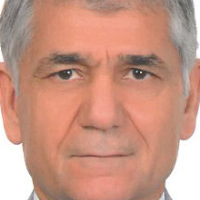Economic Inequality in Unmet Refractive Error Need in Deprived Rural Population of Iran
To determine economic inequality in unmet refractive error (RE) need and its determinants in deprived rural population of Iran.
In this population‑based study, two villages were randomly selected from among underserved villages of Iran. After selecting the participants, optometric examinations, including uncorrected and corrected visual acuity and subjective and manifest refraction, were done for all the participants. Then, unmet need for glasses was determined. Concentration index (C) was used to assess inequality, and Oaxaca–Blinder decomposition method was applied to decompose the gap between the two groups based on the determinants.
Of 3851 samples, 3314 participated in the study (response rate = 86.05%). The data of 3255 participants were used for analysis. The value of C and 95% confidence interval (CI) was −0.088 (−0.157 to −0.020), indicating a pro‑poor inequality in unmet need. The prevalence (95% CI) of unmet need was 11.74% (9.25–14.22) in the poor and 6.51% (4.96–8.06) in the rich, with a gap of about 5% in favor of the rich (P < 0.001). A marked percentage of the gap was due to the explained portion (b = 5.73; P = 0.031). In the explained portion, the variable of economic status (b = 3.48; P = 0.004) and myopia (b = 0.88; P = 0.031) caused inequality in favor of the rich and against the poor, respectively. In the unexplained portion (b = −0.51; P = 0.372), the variables of education (P = 0.002) and place (P = 0.001) had statistically significant effects on inequality.
There is a significant pro‑poor economic inequality in the prevalence of unmet need in rural areas of Iran. Although part of this inequality is related to variables such as education and myopia, a major portion (two thirds) of this inequality may be due to the direct effect of economic inequality.
-
Prevalence of Blood Groups and Their Association with Systemic Disease and Anthropometry Indices in Tehran Population
L .Koochakzadeh, A.A. Yekta, E .Shanbehzadeh, M .Khabazkhoob *
Journal of Paramedical Science and Rehabilitation, -
Corneal Biomechanical Parameters after 60-Year-Old
Fereshteh Shokrollahzadeh, Hassan Hashemi, Abbasali Yekta, Hadi Ostadimoghaddam, Mehdi Khabazkhoob
Journal of Current Ophthalmology, Jul-Sep 2022



